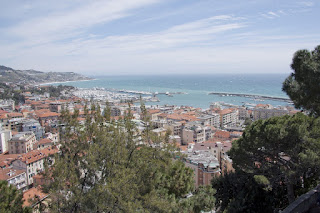Child prodigy who specialised in traditional Italian songs
.jpg) |
| Robertino Loreti pictured in 1964, when he was 17 and already a star |
Loreti, who sang live on Italian television earlier in 2022 at the age of 75, built popularity in many countries apart from Italy at his peak, his repertoire largely built on traditional Italian songs. He also appeared in acting roles in a number of films.
The fifth of eight children, he was only 10 years old when his father, Orlando, could not work for a long period because of illness. In order to help bring money into the household, Loreti had to give up school and find work.
He took a job as a delivery boy for a bakery which supplied pastries to restaurants. As he made his deliveries, he would amuse himself by singing folk songs.
The quality of his voice made an impression on people who heard him. One restaurant asked him to sing at a wedding and that led to others asking him to perform for their diners.
Because Rome was the heart of the Italian film industry, Loreti even landed small parts in films, such as The Return of Don Camillo in 1953, when as a six-year-old boy he was cast as the small son of one of the story’s main characters.
At the age of eight, the operatic quality of his voice won him a place in the choir at a production of Ildebrando Pizzetti’s opera, Assassinio nella cattedrale - Murder in the Cathedral - performed at the Vatican in the presence of Pope John XXIII.
 |
| Loreti was just five years old when he won a part in the film, The Return of Don Camillo |
Sørensen invited Roberto and his father to travel to Copenhagen. The prodigy sang on a number of TV shows and his father was persuaded to sign a contract with Sørensen to perform at concerts in Scandinavia and other parts of Europe, taking him to the age of 17.
Robertino, as he was now known, would spend months at a time on tour, singing up to three concerts a day, as well as recording albums of his songs. In 1962, he underwent a successful trip to the United States, where he performed at Carnegie Hall in New York.
By focussing his talents on classics such as Mamma, Arrivederci Roma and O sole mio, he appealed to audiences for whom such songs were the essence of Italian music. For a while he was nicknamed ‘Little Caruso’.
.jpg) |
| Loreti pictured during his appearance on the talk show Oggi è un altro giorno in April 2022 |
These festivals, enormously popular in Italy and screened on television, provided the platform for many songs that went on to be top-selling singles.
His voice now matured and described as a “baritenor” - defined as a baritone voice with the range of a tenor - he continued to give live performances for many years, although his peak years probably ended in the early 1970s.
According to some accounts of his life, Loreti retired from performing and for a time opted for a quieter life running a grocery store. After about 10 years out of the limelight, he decided to perform again.
In April 2022, six years after he last performed before an audience, Loreti was persuaded to sing on the Rai Uno talk show Oggi è un altro giorno - Today is Another Day - giving a rendition of Un bacio piccolissimo - A Tiny Kiss - which he had performed at Sanremo in 1964 at the age of 17.
 |
| A panoramic view of the Ligurian resort of Sanremo, home of the eponymous song festival |
The resort of Sanremo in Liguria expanded rapidly in the mid-18th century, when the phenomenon of tourism began to take hold, albeit primarily among the wealthy. Several grand hotels were established and the Emperor Nicholas II of Russia was among the European royals who took holidays there. The Swedish chemist Alfred Nobel was so taken with the elegance of the town after his holiday visits that he made it his permanent home. Known as the City of Flowers, it is characterised by its Stile Liberty architecture (the Italian variant of Art Nouveau), of which the Casinò di Sanremo in Corso degli Inglesi is a beautiful example. The Sanremo Festival has been an annual event since 1951, making its first appearance on Italian television in 1955. It is the longest-running televised song contest in the world.
 |
| The Fountain of the Naiads, with the Basilica di Santa Maria degli Angeli e dei Martiri beyond |
Piazza della Repubblica, where Loreti was singing at the Caffè Grand'Italia when he was spotted by the Danish TV producer who would change hie life, is a circular piazza in Rome at the of the Viminal Hill, the smallest of Rome’s seven hills, next to the Termini station. Its features include the Basilica di Santa Maria degli Angeli e dei Martiri, which was built inside part of the ruins of the Roman Baths of Diocletian and the Fountain of the Naiads - nymphs of Greek mythology - sculpted by the Sicilian Mario Rutelli in 1901. The square marks the start of Via Nazionale, one of the city’s main commercial streets, more than a kilometre in length and linking the Repubblica almost with Piazza Venezia.
Also on this day:
1885: The birth of tenor Giovanni Martinelli
1965: The birth of actress Valeria Golino
1967: The birth of composer and conductor Salvatore Di Vittorio
1968: The popular Soave wine earns the prestigious DOC status
.jpg)
.jpg)

.jpg)

.jpg)
.jpg)
.jpg)

